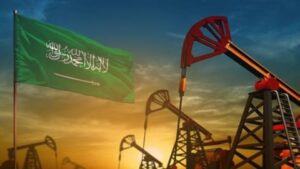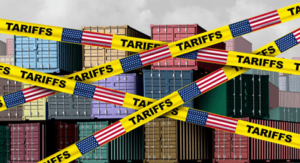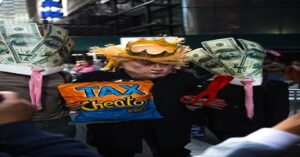
A New Economics Of Industrial Policy
Economics of industrial policy, once dismissed by mainstream policymakers, is experiencing a resurgence. Countries like the United States are implementing significant industrial policies addressing green energy, geopolitical competition, and supply-chain resilience. This global revival sparks debate on the practicality and efficacy of such policies, revealing a broad spectrum of outcomes shaped by political forces. Successful industrial policy must account for political economy.
While some industrial policies have achieved transformational success, others have floundered due to political and administrative constraints. Understanding these political dynamics is crucial for crafting effective policies that align with local governance capacities and political environments, thereby enhancing their chances of success.
Economics of Industrial Policy
Once relegated to the fringes of economic thought, industrial policy has made a significant comeback. This renewed interest is not confined to a single region; it’s a global phenomenon, with countries like the United States implementing major new industrial policies to address green energy transitions, geopolitical competition, and supply-chain resilience. However, this resurgence raises important questions about the merits, drawbacks, and practicality of industrial policies.
Table of Contents
Here, we explore six key points to understand the economics of industrial policy in today’s context.
Read More: The Rise of the Finternet
1. The Resurgence of Industrial Policy
Industrial policy, defined as state actions to alter the composition of economic activity, is experiencing a revival. This shift in the new economics of industrial policy is particularly noticeable in advanced economies, where governments are increasingly adopting policies to navigate modern challenges.
The United States, for example, is investing heavily in green energy, aiming to reduce dependence on fossil fuels and mitigate climate change. Additionally, in response to geopolitical tensions and the need for resilient supply chains, the U.S. is strategically reconfiguring its industrial base. This global renaissance signifies a profound shift in economic strategy, emphasizing the state’s role in guiding economic development.
Read More: How Silent Debt Crisis is Threatening Developing Economies
2. The Role of Politics in Industrial Policy
The renewed focus on industrial policy has brought to light the significant influence of political forces in policymaking. Unlike other economic policies, industrial policies often involve concentrated benefits and diffused costs, making their implementation politically contentious. Political considerations can sometimes overshadow economic rationality, as policymakers navigate the interests of various stakeholders.
For instance, policies that disrupt the status quo may face opposition from powerful incumbents. Thus, understanding the political landscape is crucial for the success of industrial policies. This interplay between politics and the economics of industrial policy highlights the need for a nuanced approach to policy design and implementation.
Read More: Global Political Instability Signals for Rethinking Political Economics
3. Empirical Evidence of Successes and Failures
The new economics of industrial policy, as outlined by researchers like Dani Rodrik, reveals mixed outcomes. Some industrial policies have led to significant economic transformations. For example, South Korea’s Heavy and Chemical Industry push in the 1960s, despite initial skepticism, successfully transformed the nation into a heavy-industry powerhouse.
This policy not only increased output and export development in targeted sectors but also shifted the country’s comparative advantage, making its economy more robust. Similarly, postwar Italy’s industrial policy aimed at developing lagging southern regions led to the creation of high-skill manufacturing clusters and knowledge-intensive service jobs, boosting national industrial production.
On the other hand, not all industrial policies have been successful. Case studies from Latin America and Africa show that smaller-scale industrial policies can also achieve success, such as Colombia’s export of flowers to the U.S. and Ethiopia’s promotion of cut flower exports.
However, there have been notable failures as well. For instance, many post-independence African countries and Southeast Asia’s “Look East” policies faced significant challenges due to government failures, leading to inefficiencies and economic distortions.
Read More: The Financial Destruction of Palestine
4. The Constraints of Politics and State Capacity
Understanding the constraints imposed by political and administrative capacities is essential for effective industrial policy within the economics of industrial policy. Successful policies often align with the domestic political environment, gaining support from those in power and fitting within the state’s administrative capabilities. Conversely, policies that conflict with the prevailing political landscape or exceed administrative capacities are likely to fail. This explains why some countries have struggled to replicate the success of East Asian industrial policies.
For example, South Korea’s political climate in the 1960s and 1970s, characterized by external military threats and economic pressures, was conducive to the implementation of aggressive export-oriented policies. In contrast, attempts to adopt similar policies in Malaysia and Thailand faced significant hurdles due to differing political and administrative contexts.
Read More: Reforming Global Financial Architecture And Sustainable Economic
5. Lessons for Policymakers
Given the complex interplay of politics, economics, and administrative capacity, policymakers must consider several key lessons for successful industrial policy:
1. Alignment with Domestic Political Environment:
Policies must align with the domestic political landscape. Policymakers need to assess who benefits, who loses, and how political incentives support the adoption and sustainability of policies across political cycles.
2. Tailoring to Administrative and Fiscal Capacity:
Industrial policies should be designed to match the country’s administrative and fiscal capabilities. Developing economies, for instance, may need to adopt different tools and strategies compared to advanced economies.
3. Investment in Administrative Capacity:
Effective industrial policy often requires significant investment in administrative capacity. This includes building skilled bureaucracies and robust data collection systems to monitor and adjust policies as needed.
Read More: Impact of Ukraine Conflict on Russia’s Naval Power in the Black Sea
6. The Path Forward: Balancing Optimism and Skepticism
The renewed interest in the economics of industrial policy brings both optimism and skepticism. While some episodes of industrial policy have been transformational, others have highlighted the risks of government failure. Economists’ skepticism often stems from concerns about these failures, leading to strong claims against the feasibility of industrial policies. However, history shows that government failures can be overcome with the right combination of political alignment and administrative capacity.
Policymakers must focus not only on addressing market failures but also on understanding the political and governance constraints that shape policy outcomes. Smaller-scale successes across the globe indicate that industrial policy can work when tailored to local conditions. For instance, Ethiopia’s promotion of cut flower exports demonstrates that targeted, well-implemented policies can yield significant economic benefits.
To build on these successes, more empirical research is needed to explore the diverse experiences of industrial policy. This includes measuring and evaluating the impact of different policies in various contexts. By focusing on both the economics and politics of industrial policy, researchers and policymakers can develop a more comprehensive understanding of what works, what doesn’t, and why.
Bottom Line
The economics of industrial policy is experiencing a resurgence, driven by the need to address modern challenges like green energy, geopolitical competition, and supply-chain resilience. This revival highlights the significant role of political forces in shaping policy outcomes and the importance of aligning policies with domestic political and administrative capacities.
While there are notable successes, the risks of government failure remain. Policymakers must learn from past experiences, tailor policies to local conditions, and invest in administrative capacity to enhance the chances of success. By doing so, they can navigate the complex landscape of industrial policy and drive sustainable economic development.





